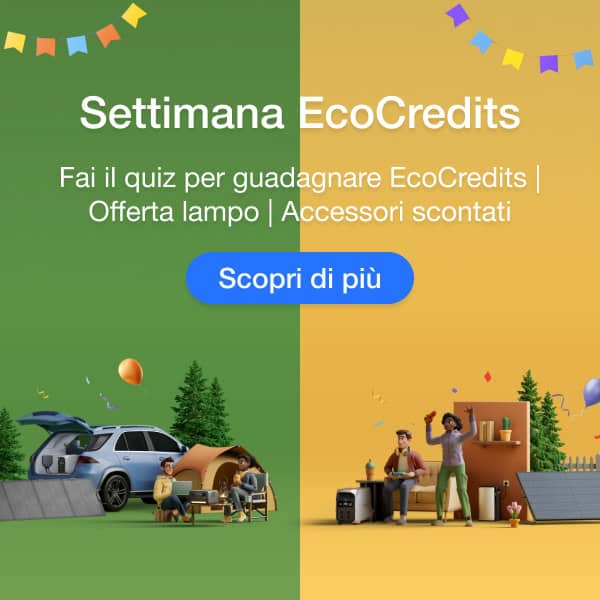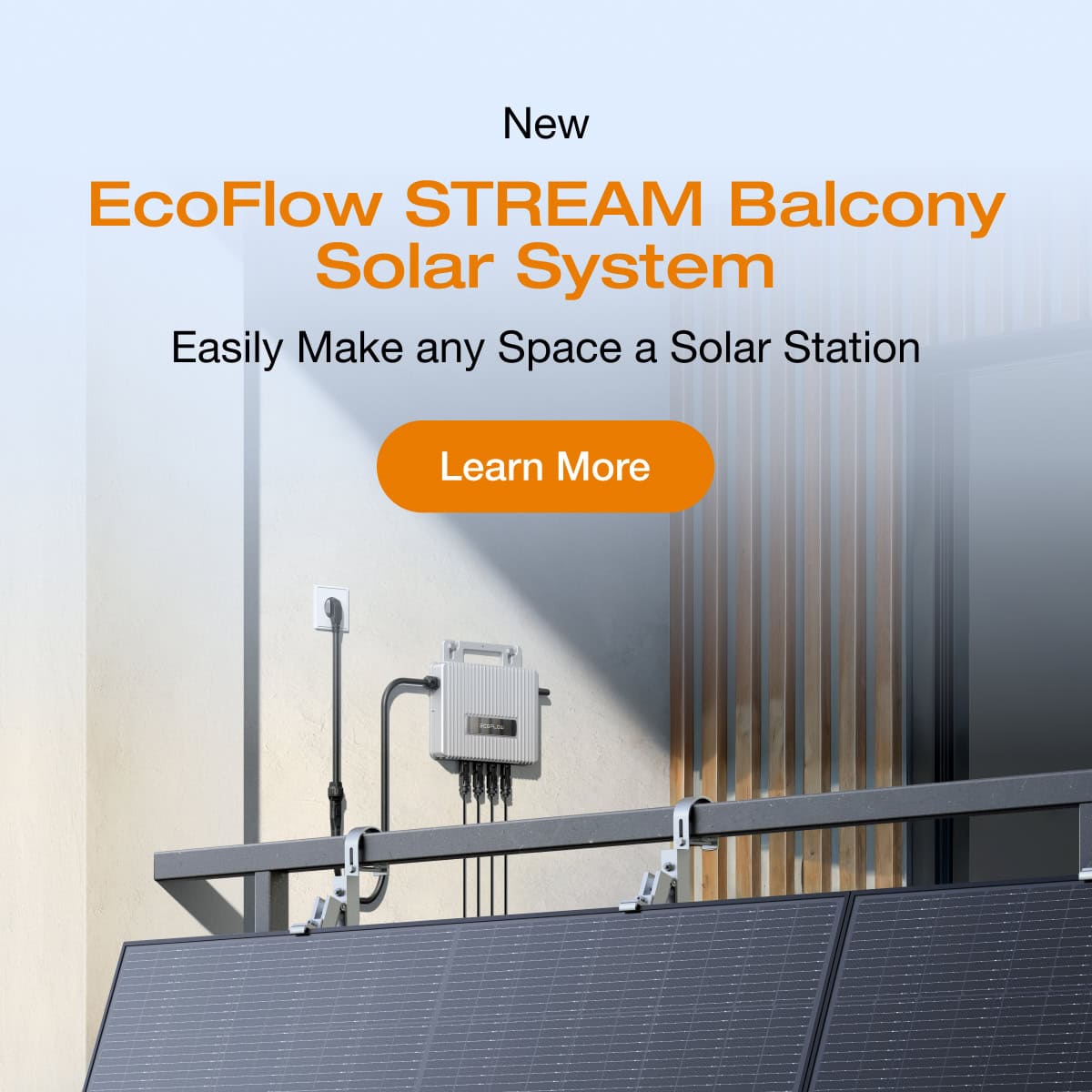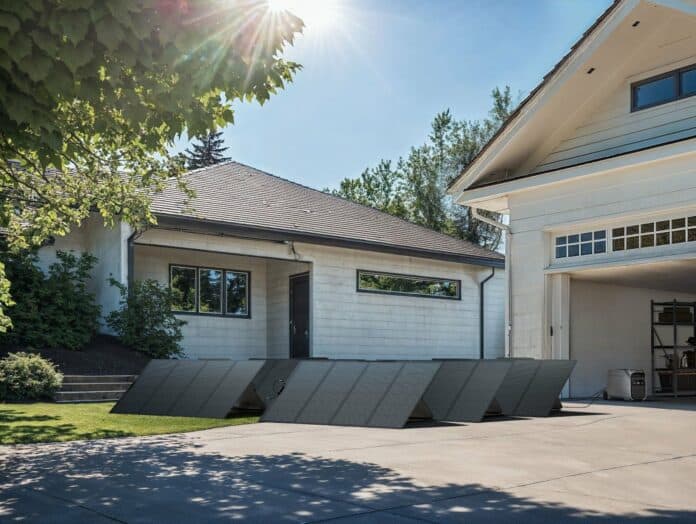Table of Contents
With more and more consumers searching for sustainable and efficient energy solutions, hybrid solar systems are emerging as the perfect solution.
Hybrid solar power systems balance the benefits of solar energy with the convenience of on-grid electricity, redefining how we utilise renewable energy in our daily lives.
If you’re looking to achieve energy independence or reduce your carbon footprint while maintaining a utility grid connection, a hybrid solar power system is the right choice.
Find out why hybrid solar power systems are becoming the #1 choice of consumers looking to save money on electricity bills and achieve energy security.
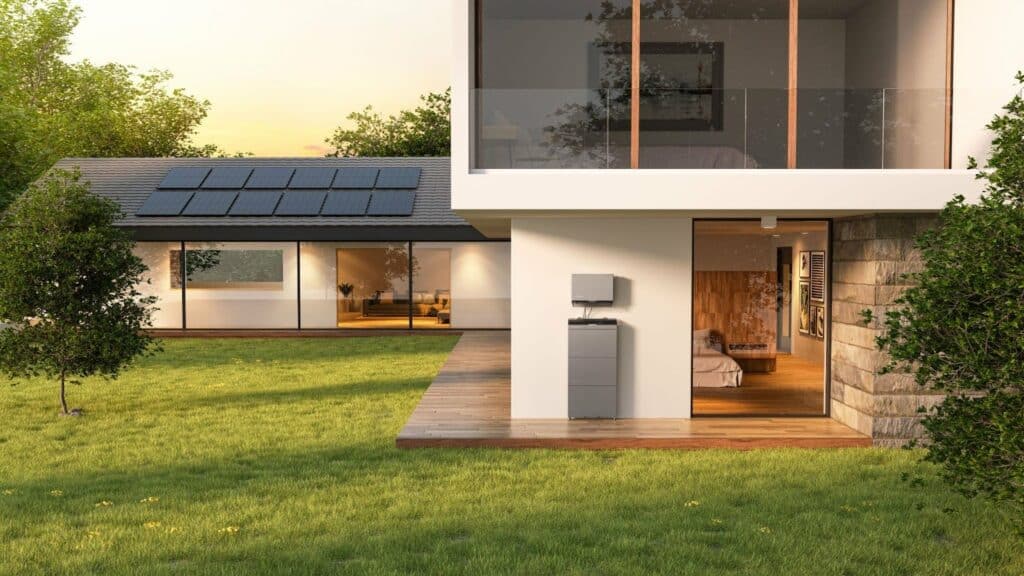
What Is a Hybrid Solar System and What Equipment Do I Need?
A hybrid solar system combines all the benefits of on-grid electricity with the energy security and cost savings of an off-grid power solution.
A hybrid system utilises photovoltaic modules — typically solar panels — and a balance of system to produce electricity and store it in a solar battery or convert it to AC power for immediate consumption or transmission to the utility grid.
By combining solar + storage, hybrid systems circumvent one of the primary disadvantages of grid-tied systems.
Traditional on-grid solar power systems DO NOT work during a blackout.
In addition to energy security, hybrid solar power systems allow you to maximise electricity bill savings by only using on-grid power during off-peak or mid-peak hours when Time-of-Use pricing is more favourable.
Hybrid solar power systems require at least one of each of the following components:
- Photovoltaic modules (solar panels)
- Charge controller (MPPT or PWM)
- Solar inverter
- Solar battery
- Storage inverter (may be built-in with some solar batteries)
- Battery management system (BMS)
- Bidirectional or smart meter (for connection to the utility grid)

How Does a Hybrid Solar Power System Work?
A hybrid solar energy system combines the benefits of on-grid and off-grid photovoltaic systems by marrying utility grid connectivity and battery storage.
Both on-grid and off-grid residential PV systems utilise solar panels or other PV modules to harvest photons from sunlight and convert them into DC electricity using the photovoltaic effect.
(Source: Energy Education)
In residential applications, PV modules, like solar panels, are typically made of monocrystalline or polycrystalline photovoltaic cells protected by a transparent surface like tempered glass and encased in a stainless steel frame.
(Source: Energy Education)
Photons hit the photovoltaic surface of the panel, which is comprised of multiple solar cells. Each cell contains two semiconductors — p-type and n-type — that form a p-n junction to create an electric field. The p-n junction converts photons into direct current (DC) electricity.
At this point in the electricity generation process, what happens next differs depending on whether a system is grid-tied, off-grid, or hybrid.

(Source: Penn State)
On-Grid Solar
In a traditional grid-tied system, the DC electricity is transmitted by cables directly to a string or central solar inverter.
The inverter converts DC to AC electricity for immediate consumption in your home or transmission to the utility grid.
An on-grid system automatically toggles back and forth between solar and utility electricity depending on how much electricity your PV array generates and the parameters you set for your system.
One essential consideration that sometimes gets overlooked is that grid-tied solar panel systems without storage DO NOT WORK during a blackout.
Instead, the system will automatically shut down and disconnect from the grid to prevent workers from being injured and further damage to infrastructure.

(Source: Penn State)
Off-Grid Solar
Off-grid solar power systems operate independently from the grid and rely on solar batteries to deal with solar power’s inherent intermittency.
Most clean, renewable energy sources — like wind, hydro, and solar — are intermittent.
Specific environmental or physical conditions beyond human control are required for intermittent energy sources to generate electricity.
In the case of solar power, sunlight is a prerequisite. Electricity production is diminished on cloudy days, and solar panels don’t work at night.
Off-grid solar systems solve the intermittency problem by storing electricity in solar batteries when PV modules generate no power or your consumption exceeds supply.
In an off-grid solar generator like EcoFlow DELTA Pro 3, solar panels send electricity to a charge controller built into the portable power station.
Depending on the charge level of the LiFePO4 solar battery, your current consumption, and the parameters you’ve set, the charge controller will either transmit DC electricity from your PV panel array to the LFP battery or the built-in solar inverter for conversion to AC electricity and immediate use in your home.
Hybrid Solar
Hybrid solar power systems combine the benefits of grid-tied and off-grid configurations to offer the ultimate in flexibility and energy security.
Because on-grid systems are bidirectional, solar inverters without battery storage shut down automatically during a power outage to prevent harming workers trying to restore electricity and avoid accidental damage to the grid.
Without a blackout “kill switch,” electricity would continue to be transmitted to the grid with potentially devastating consequences.
Off-grid systems offer greater energy security but lack the convenience of tapping into utility power if necessary.
Portable power stations like EcoFlow’s DELTA Series allow you to recharge using AC electricity.
But you’ll need to plug it into a wall socket or connect to your home circuit board using a transfer switch.
(Source: Vermont.gov)
Additionally, off-grid solar power systems aren’t eligible to participate in net metering programs, a process for selling excess electricity generated above what you consume to your power company.
Net metering in the UK was formerly known as the Feed-In Tariff and is now covered under the Smart Export Guarantee (SEG) scheme.
A hybrid solar power system like EcoFlow PowerOcean provides home energy security, the convenience of utility grid electricity, and the ability to participate in SEG.
The complete list of clean energy systems that generate 5mW of power or less and are eligible for SEG is:
- Solar photovoltaic panels and other PV modules
- Hydroelectric
- Micro-combined heat and power (with an electrical capacity of 50kW or less)
- Onshore wind
- Anaerobic digestion
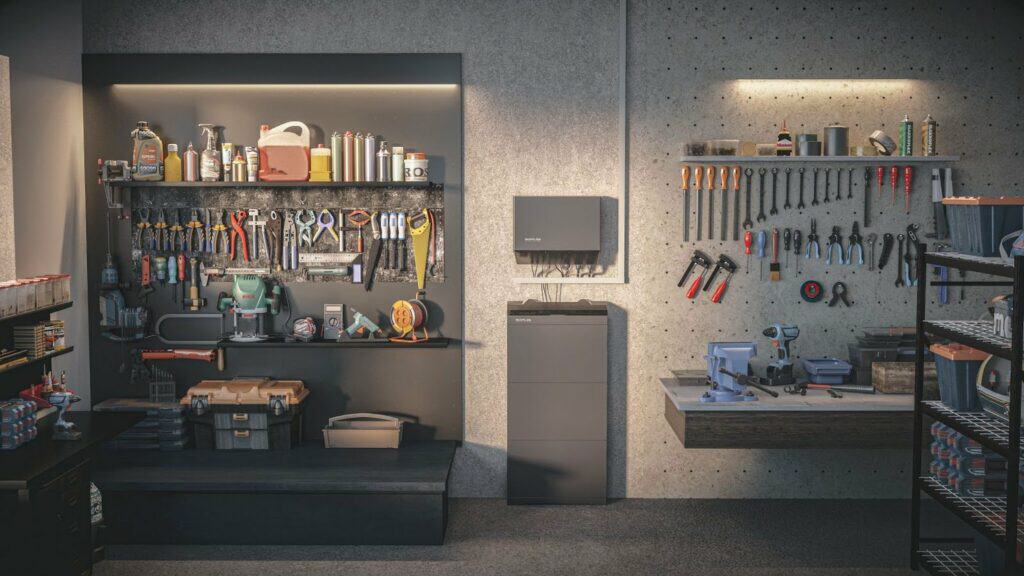
EcoFlow PowerOcean is a hybrid whole-home solar power and backup battery solution.
Fully maxed out, it provides:
- 45kWh of storage capacity
- 12kW of AC output
- 16kW of solar input capacity (Up to 40 x EcoFlow 400W Rigid Solar Panels)
Thanks to its modular design, you can start small with just one 5kWh (800V) home backup battery and scale up to home energy independence, one battery at a time.
Hybrid Solar System Advantages
Hybrid solar systems offer a compelling blend of efficiency, resilience, and cost-effectiveness, making them an increasingly popular choice for homeowners.
Hybrid PV systems provide numerous significant advantages over traditional grid-tied and off-grid systems.
- Energy Independence: One of the most notable benefits of a hybrid system is enhanced energy independence. By generating and storing your own electricity, you rely less on the grid, reducing your vulnerability to outages and increasing self-sufficiency.
- Energy Security: Due to extreme weather events and other factors, blackouts and extended power outages are increasing in frequency. Grid-tied PV systems don’t function during an outage. A hybrid PV system gives you the convenience of utility power with the security of off-grid storage.
- Longevity: High-quality mountable PV modules like EcoFlow’s rigid and flexible solar panels will provide decades of service. When it comes to solar batteries, battery chemistry is the most significant determiner of cycle life. EcoFlow’s PowerOcean LFP Batteries use proprietary lithium iron phosphate battery chemistry and provide 6,000 cycles (full charge/discharges) before diminishing to 75% storage capacity.
- Exceptional Depth of Discharge
- Cost Savings: Hybrid PV systems provide significant savings on electricity bills. You can use stored solar energy during peak hours when electricity rates are higher and only use grid power off-peak.
- Maximise Electricity Generation Efficiency: If you live in a location that doesn’t offer net metering and don’t have solar battery storage, any electricity your solar panel array generates in excess of what you consume will simply go to waste. A hybrid PV system prevents this from happening, at least until your solar batteries are fully charged. And you can always add more batteries (up to 45kWh).
- Reduced Carbon Footprint: Renewable energy systems, like hybrid solar, significantly reduce your household’s carbon footprint, helping in the global fight against global warming and climate change.
- Scalability: Modular systems like EcoFlow PowerOcean allow you to start small and add capacity as your electricity needs grow — or as your budget allows
- Net Metering and SEG Capabilities: Some hybrid solar systems are net metering compatible, allowing you to sell electricity back to the grid, shorten solar payback, and eventually make money.
- Durability: With an IP65 dust and water-resistant rating, the EcoFlow PowerOcean hybrid system is durable enough for sheltered outdoor use — even in extreme cold or heat (Operating temperatures: -20C° to 50C°)
- Quiet: EcoFlow PowerOcean operates at around ~35dB
- Maintenance-Free: Unlike petrol, diesel, or propane generators, off-grid and hybrid solar generators have few moving parts and require no routine maintenance.
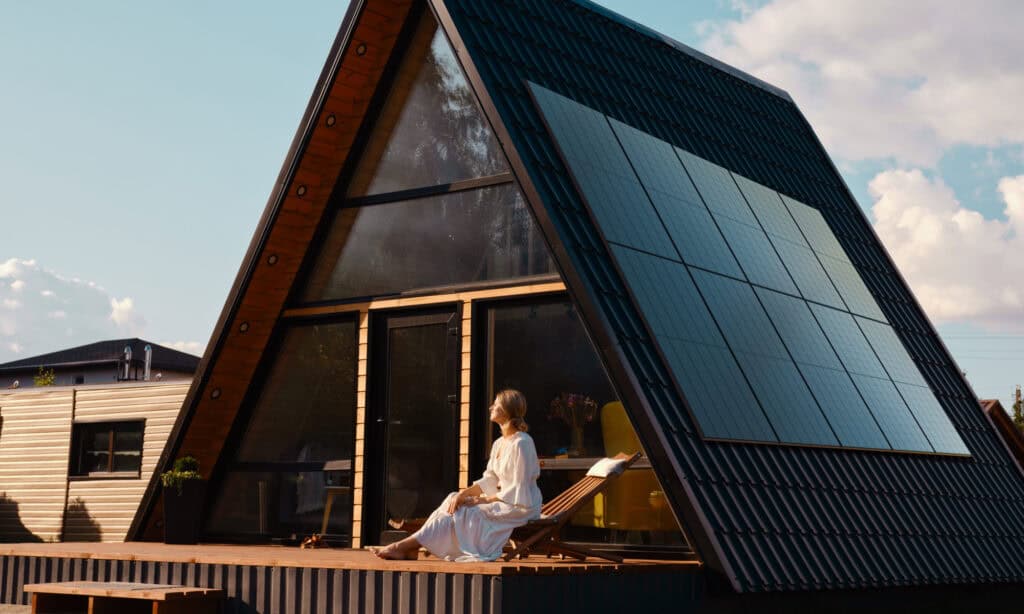
Hybrid Solar System Disadvantages
Hybrid solar systems offer numerous benefits, but it’s important to consider the drawbacks.
Understanding the disadvantages and benefits of any renewable energy system enables you to make an informed decision.
Here are the primary drawbacks of hybrid PV systems.
- Higher Upfront Investment: One of the main drawbacks of hybrid systems is higher upfront costs compared to traditional systems. The additional expense is primarily due to the inclusion of battery storage and a more complex balance of system.
- Space Requirements: Hybrid PV systems with multiple solar batteries require installation space. Sheltered outdoor installation is an option for EcoFlow PowerOcean.
- More Complex Installation and Setup: Installing a hybrid system is more complex than a standard off-grid or grid-tied system. You can easily DIY an off-grid PV system installation unless you want home circuit board integration through a transfer switch. Only a licensed electrician can wire your PV system to your home circuitry and connect it to the utility grid for on-grid and hybrid solutions. Not only is working with high-voltage electricity potentially deadly, but grid connectivity will require inspection and permits.
When Do Hybrid Solar Systems Make Sense?
Hybrid solar systems are not the best option for everyone.
But, hybrid solar offers significant advantages over traditional grid-tied and off-grid residential PV configurations in many scenarios.
Read on to find out when a hybrid PV system makes sense (and when it doesn’t).
No Net Metering
A hybrid solar system is particularly advantageous in locations where net metering programs are unavailable or financially unrewarding. Without net metering, you can’t sell electricity you don’t consume to the utility grid. A hybrid system gives you the convenience of utility grid power and prevents the electricity your PV array produces in excess of consumption from going to waste.
Frequent Power Outages
If you live in an area prone to blackouts, a hybrid solar system offers reliable backup power to offset an undependable grid. Traditional on-grid solar systems automatically shut down during power outages, but a hybrid PV system switches to battery power instantaneously, ensuring an uninterrupted electricity supply. If you don’t want to go entirely off-grid, hybrid systems are ideal for regions with unstable grid infrastructure or severe weather conditions that frequently lead to blackouts.
Increased Energy Independence Without Going Fully Off-Grid
Aiming to reduce your family’s reliance on ageing infrastructure? A hybrid solar power system is a viable option that allows you to stay connected (or disconnect) from the utility grid. By combining solar electricity generation with storage and grid connectivity, hybrid systems provide energy independence and flexibility. You can use the electricity you generate with solar panels 24/7 or take advantage of off-peak utility rates to cheaply supplement your production.
Frequently Asked Questions
Traditional on-grid solar systems use a solar inverter to convert DC electricity from photovoltaic modules like solar panels to AC electricity for household use or transmission to the utility grid. A hybrid solar system combines on-grid connectivity with solar battery storage to offer energy security and a higher solar ROI. Traditional grid-tied systems don’t work in a blackout.
Off-grid and hybrid solar systems each have their benefits. Off-grid systems operate independently from the National Grid, making them ideal for locations without utility electricity. Hybrid systems combine renewable energy generation with solar panels + solar battery storage + utility grid connectivity, providing energy security and the ability to avoid on-peak electricity rates. Unlike grid-tied solar panel systems, hybrid and off-grid configurations supply electricity during a blackout.
Hybrid photovoltaic systems offer grid-tied solar convenience with the energy security of off-grid. Traditional on-grid systems don’t work during power outages. Hybrid systems combine renewable energy generation with solar panels + solar battery storage + utility grid connectivity. The initial investment in a hybrid PV system can be lower than off-grid because battery storage is only required during blackouts or peak electricity rate hours (if you wish to save money on-grid).
Final Thoughts
A hybrid solar power system gives you the best of both worlds.
You get the convenience of utility grid connectivity coupled with all the benefits of off-grid battery storage.
Many experts see the solar + storage model as the most viable path forward for individuals, industry, and governments worldwide to transition away from fossil fuel dependence.
EcoFlow PowerOcean offers an affordable modular solution that allows you to increase your energy independence in stages and eventually — if you wish to — eliminate your reliance on the grid altogether.
All while ensuring you maximise the return on your solar investment.
EcoFlow has a wide variety of innovative solar and battery backup solutions. Check out our selection today,
